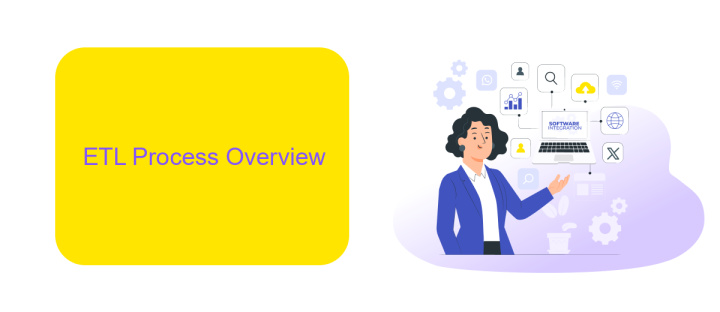ETL and Data Warehousing Integration
ETL (Extract, Transform, Load) and data warehousing are fundamental components of modern data management strategies. They enable organizations to consolidate, cleanse, and analyze large volumes of data from diverse sources. This article explores the integration of ETL processes with data warehousing, highlighting best practices, benefits, and key considerations for optimizing data workflows and ensuring high-quality, actionable insights.
Introduction
ETL (Extract, Transform, Load) and data warehousing are critical components of modern data management strategies. They enable organizations to efficiently handle vast amounts of data, ensuring its accuracy, consistency, and accessibility. ETL processes involve extracting data from various sources, transforming it into a suitable format, and loading it into a data warehouse for analysis and reporting.
- Extraction: Gathering data from diverse sources such as databases, APIs, and flat files.
- Transformation: Converting raw data into a structured format, applying business rules and data cleansing.
- Loading: Inserting transformed data into a data warehouse for storage and analysis.
Integrating ETL processes with data warehousing can be complex, requiring robust tools and services. ApiX-Drive is one such service that simplifies the integration process by automating data transfers between systems. This ensures seamless data flow, reduces manual intervention, and enhances data accuracy, making it an invaluable tool for businesses aiming to optimize their data management practices.
ETL Process Overview

ETL (Extract, Transform, Load) is a crucial process in data warehousing that involves extracting data from various sources, transforming it to fit operational needs, and loading it into a destination database. The extraction phase involves retrieving data from multiple, often heterogeneous sources such as databases, APIs, and flat files. During the transformation phase, the extracted data is cleansed, enriched, and transformed into a suitable format for analysis. This may include operations like filtering, aggregating, and joining data from different sources.
The final phase, loading, involves inserting the transformed data into a target data warehouse or database, making it readily available for querying and analysis. Tools like ApiX-Drive can streamline the ETL process by providing seamless integration between various data sources and destinations. ApiX-Drive offers an intuitive interface and automated workflows, reducing the complexity and time required for setting up ETL pipelines. This ensures that businesses can maintain accurate and up-to-date data, ultimately enhancing decision-making processes and operational efficiency.
Data Warehousing Concepts

Data warehousing is a critical component in the landscape of data management and analytics. It involves the storage of large volumes of data from various sources into a central repository, allowing for efficient querying and analysis. The primary goal is to consolidate data in a way that supports decision-making processes within an organization.
- Data Integration: Combining data from multiple heterogeneous sources into a single, unified view.
- Data Storage: Efficiently storing large volumes of data in a structured format.
- Data Retrieval: Providing quick and easy access to the stored data for analysis and reporting.
- Data Management: Ensuring data quality, consistency, and security within the warehouse.
Implementing a robust data warehouse can be complex, but tools like ApiX-Drive simplify the integration process by automating data transfer from various applications to the warehouse. This ensures that the data is always up-to-date and readily available for analysis, enhancing the overall efficiency and effectiveness of business operations.
ETL and Data Warehousing Integration

ETL (Extract, Transform, Load) processes are essential for integrating data from various sources into a cohesive data warehouse. These processes ensure that data is accurately extracted from source systems, transformed into a suitable format, and loaded into the data warehouse for analysis and reporting. Effective ETL integration is crucial for maintaining data integrity and providing reliable insights.
Data warehousing integration involves several steps, including data cleansing, transformation, and loading. Proper integration allows organizations to consolidate data from disparate sources, enabling comprehensive analysis and strategic decision-making. The integration process can be complex, requiring robust tools and methodologies to handle large volumes of data efficiently.
- Data Extraction: Gathering data from various sources.
- Data Transformation: Converting data into a suitable format.
- Data Loading: Importing transformed data into the warehouse.
Tools like ApiX-Drive facilitate seamless ETL and data warehousing integration by automating data flows and reducing manual intervention. ApiX-Drive's user-friendly interface and powerful features enable organizations to set up integrations quickly, ensuring that data is always up-to-date and readily available for analysis. By leveraging such tools, businesses can enhance their data management capabilities and drive better outcomes.


Benefits and Use Cases
Integrating ETL (Extract, Transform, Load) processes with data warehousing offers numerous benefits, such as improved data quality, enhanced decision-making, and streamlined operations. By automating data extraction from multiple sources, transforming it into a usable format, and loading it into a centralized data warehouse, organizations can ensure that their data is accurate, consistent, and up-to-date. This leads to more reliable analytics and reporting, enabling better strategic decisions and operational efficiency.
Use cases for ETL and data warehousing integration span various industries, from finance to healthcare. For example, in retail, businesses can integrate sales data from different channels to gain a comprehensive view of customer behavior and inventory levels. Tools like ApiX-Drive can facilitate these integrations by offering a user-friendly platform to connect disparate data sources without extensive coding. This allows companies to quickly set up and manage their data workflows, ensuring that they can react swiftly to market changes and customer needs.
FAQ
What is ETL in the context of data warehousing?
Why is data warehousing important for businesses?
What are the main challenges in ETL and data warehousing integration?
How can automation tools help in ETL and data warehousing integration?
What are the best practices for successful ETL and data warehousing integration?
Apix-Drive will help optimize business processes, save you from a lot of routine tasks and unnecessary costs for automation, attracting additional specialists. Try setting up a free test connection with ApiX-Drive and see for yourself. Now you have to think about where to invest the freed time and money!

